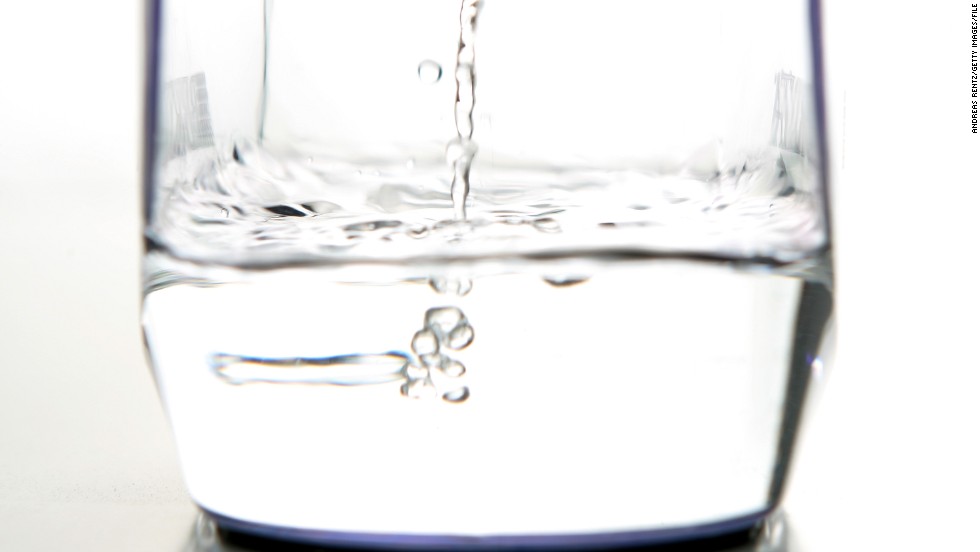Story highlights
- Check for these signs to monitor your health and any issues you may not know about
- It's easy to become dehydrated but you can also overhydrate as well
Did you know that looking into the toilet bowl is like looking into a crystal ball for your health? The color of your pee can change depending on how hydrated you are, what foods you've been eating, and even as a weird side effect to certain medications. Here's what your urine color says about your health ŌĆö and when it could signal a serious problem.
What Your Urine Color Means About You
Clear
By now you've heard that drinking eight glasses of water a day and staying hydrated is important for your health. But if your urine looks like water, you're probably overhydrated, says Jane Miller, MD, associate professor of urology at the University of Washington. You likely aren't doing yourself any harm, but there's no data to support the need for drinking eight or more glasses of water a day, Miller says. Plus, you'll just wind up spending half your day in the bathroom if you're drinking too much.
Pale Yellow
Consider this your toilet bowl goal. You should strive to have light yellow pee, somewhere between clear and the color of apple juice. You're probably sufficiently hydrated if your pee is pale yellow, but it doesn't necessarily mean anything about your health beyond that if your pee is darker or lighter, says Miller.
Bright Yellow
If your pee looks like a neon billboard, blame B vitamins, Miller says. Riboflavin (B2) is naturally fluorescent when exposed to UV light. It might be jarring to see, but it's nothing to worry about. Your body excretes the riboflavin it doesn't need through urine, which is why excess amounts, either consumed in food or through taking supplements, could make your pee look bright yellow. Almost all multivitamins contain riboflavin, as do food such as eggs, organ meats, lean meats and dairy.
Brownish-Yellow
Pee that's the color of apple juice is the darkest end of the "normal" urine spectrum. While you might assume it means you're super dehydrated, it really just means your pee is extra concentrated, says Miller. "Just because urine is concentrated doesn't mean you are dehydrated. Your kidneys are very good at concentrating urine to keep you from becoming symptomatically dehydrated." That said, if your urine is dark often, it wouldn't be a bad idea to drink more water, especially if you're exercising a lot.
Brown
Brown urine can be associated with myoglobinuria, or the presence of myoglobin ŌĆö a protein found in muscle ŌĆö in the urine. It's most commonly associated with rhabdomyolysis, or "rhabdo," which is a form of muscle damage that causes muscle fibers to die and be released into the bloodstream (you may have heard about it in discussions about CrossFit). Without prompt medical care, rhabdo could lead to lasting kidney damage.
Greenish-Blue or Orange
We wouldn't blame you for freaking out if your pee showed up blue in your bowl. But if you're being treated for a UTI, strange greenish-blue pee could be a side effect. That's because Uribel, a medication used to treat urinary symptoms and irritations, contains methylene blue, a dye that can show up in your urine.
Likewise, if you're being treated with Phenazopyridine, a urinary tract analgesic used for UTIs or bladder irritation, your pee could turn orange. This is a normal side effect of the medication, and should clear up when your treatment is finished. In both cases, consult with your doctor if you're concerned!
Pink or Red
A crimson hue could mean a few things. The least worrisome would be that you've been eating lots of beets, says Miller. In large amounts, the pigments in beets can actually turn your pee red. This discoloration isn't harmful and should resolve fairly quickly, says Miller. If it doesn't, you'll want to get your urine tested for blood, which is another reason your pee might be red. Bloody urine could be a sign of a urinary tract infection (UTI) or urinary stones, which are usually accompanied with pain and discomfort. Kidney, ureter and bladder cancers can also present with blood in the urine, and typically don't have other symptoms, such as pain, associated with the bloody urine, says Miller. "Although all important, this is the most serious, and why you should let your [healthcare] provider know ŌĆö even if it goes away quickly ŌĆö because some cancers bleed intermittently."



































